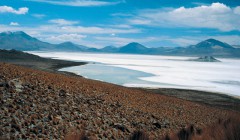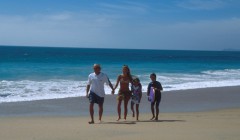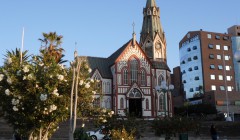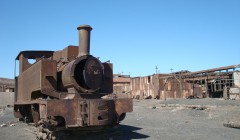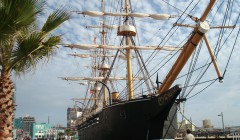- Altiplano
- Arica Beach
- Arica Cathedral
- Humberstone
- Iquique Esmeralda
Travel Type: Active
Duration: 5 Days
- Tour Description
- Included Services
- Notes
(5 days/4 nights)
Day 1 – Iquique – Chusmiza
Your arrival at the airport in Iquique is followed by a short drive through the city, before heading inland. First stops on the tour are Santa Laura and Humberstone: ghost towns left behind by the defunct nitrate industry. Afterwards, the journey continues to the rock paintings of Cerro Unita, where the best-known painting is the ‘Atacama Giant’ (Gigante de Atacama). At 86m/282ft, it is the largest of his kind in the world.
Lunch is at a restaurant typical for the region.
You steadily gain altitude as the journey continues, before reaching Chuzmisa, at 3,400m/11,155ft, in the late afternoon. Overnight accommodation is at the Cabañas de Chuzmisa.
Day 2 – Chusmiza – Colchane
The tour continues onwards and upwards, heading in the direction of Colchane. En route, impressive valleys are traversed, such as the ‘Valley of Happiness’ (Valle de Felicidad), and the villages of Cariquima and Anconvinto are passed, the latter lying at 3,800m/12,468ft. This is also where you get out for a walk, for a closer encounter with nature, including the giant cacti Echinopsis atacamensis.
A boxed lunch is carried for today.
Colchane, located at 3,730m/12,238ft, will be reached in the afternoon. The remainder of the day is set aside for acclimatising to the altitude, and the night is spent at the Hostal Camino del Inca.
Day 3 – Colchane – Surire
Departing from Colchane, your journey continues in the direction of the Isluga Volcano National park, where the village of Isluga is visited. The most beautiful church of the Chilean altiplano (high plateau) is found there.
Lunch is at the thermal springs of Enquelga.
Along the way, you will have the chance to spot the varied fauna of the Andes, including guanacos, vicuñas, alpacas, pumas, foxes, flamingos, as well as many rare bird species, armadillos, and skunks – to name just a few!
The highest point of the tour is reached today, where at 4,900m/16,076ft, you can enjoy marvellous views of the Isluga volcano and the Surire salt pan.
Overnight accommodation is at a simple refuge located at 4,200m/13,780ft, near the Salar de Surire.
Day 4 – Surire – Putre
You will visit the thermal springs of Polloquere and the salt pan of Surire early in the morning, where you have the opportunity to observe large flocks of flamingos. Afterwards, the journey continues north, en route for the Lauca National park, visiting the Las Vicuñas national reserve on the way, as well as various villages.
The emerald green surface of Lake Chungará, at an altitude of 4,500m/14,764ft, beautifully reflects the snow-covered cone of the Parinacota volcano. The village of Parinacota will be visited as well, where there is another historic adobe church, dating from the 17th century.
From there, the journey begins its descent to Putre, located at 3,500m/11,483ft, where you stay the night at the Hosteria Las Vicuñas. This is also the first time you can enjoy the advantages of ‘civilisation’ again, such as telephones and the internet.
Day 5 – Putre – Arica
Your last day is spent travelling to Arica. The journey traverses the fertile Lluta Valley, where corn has been cultivated since the dawn of time. Lunch is at a restaurant en route.
The archaeological museum of San Miguel is visited once the Azapa Valley is reached, which contains an interesting collection of mummies belonging to the Chinchorro Culture.
Afterwards, the tour continues to Arica, where a short drive through the city is followed by arrival at the airport, which marks the end of your journey.
The tour can be extended with additional hotel nights in Arica.
– Private transport in all-terrain vehicles
– Accommodation in the places mentioned
– Full board
– Provision of mineral water during journeys
– Oxygen supply available in the vehicle
– Entrance fees



